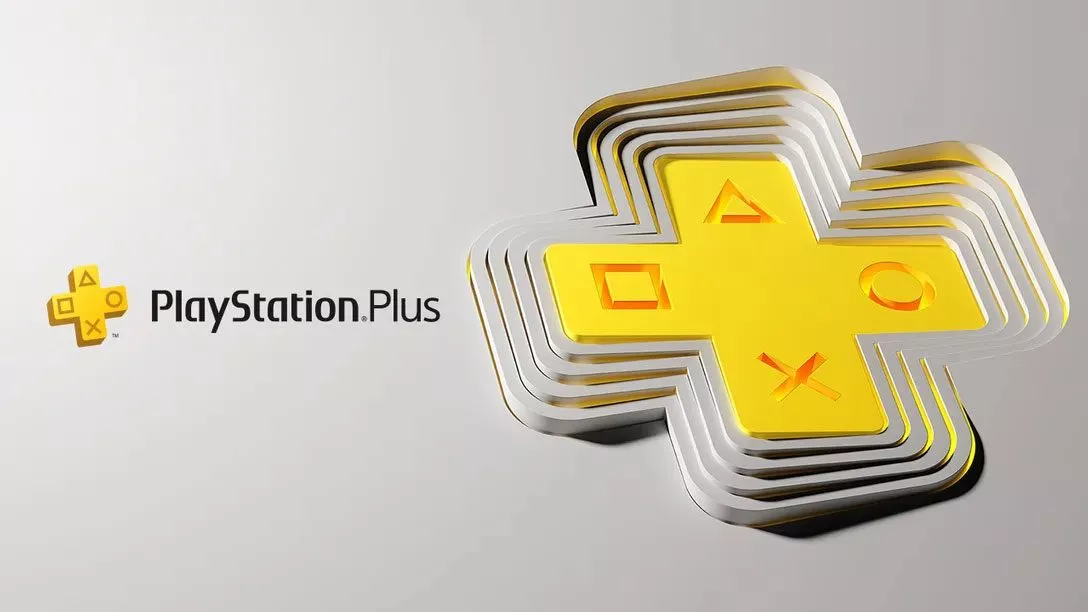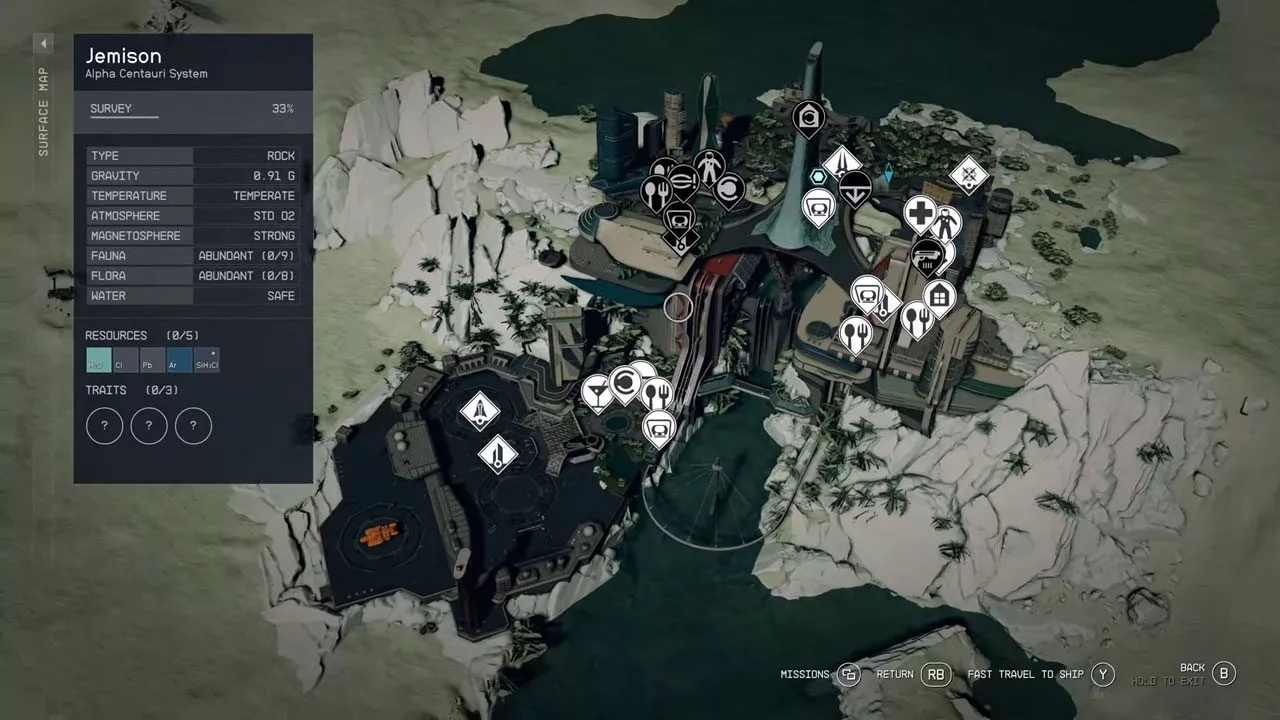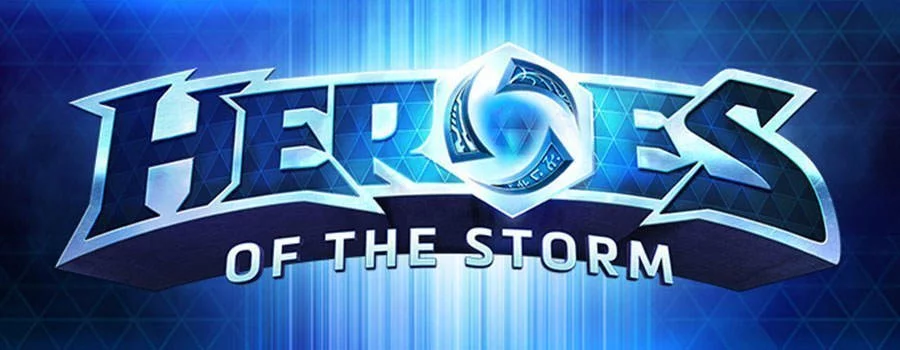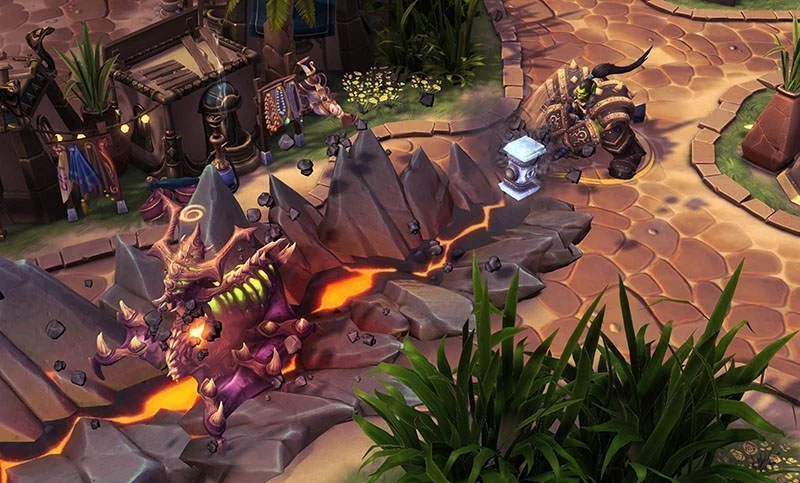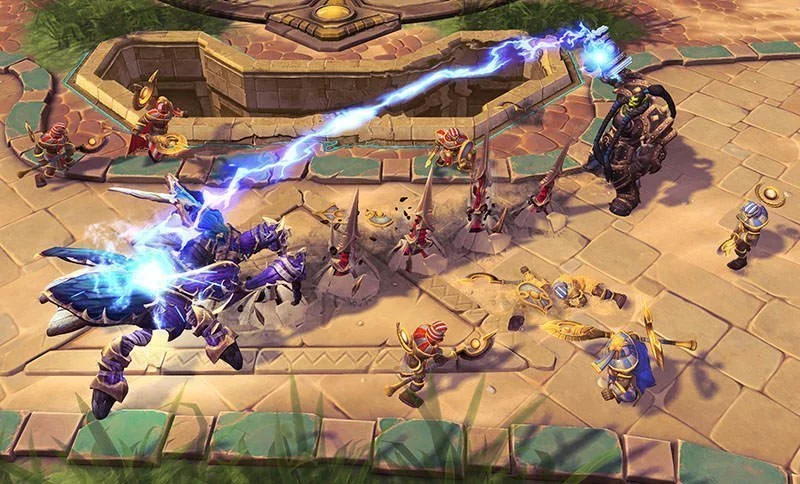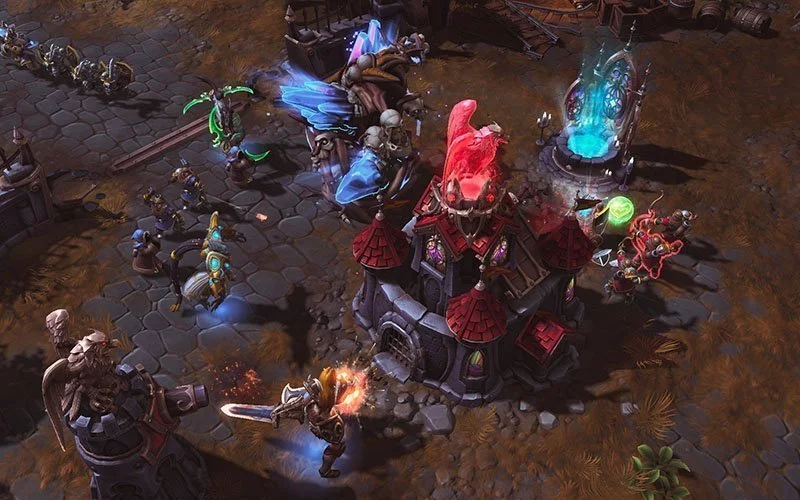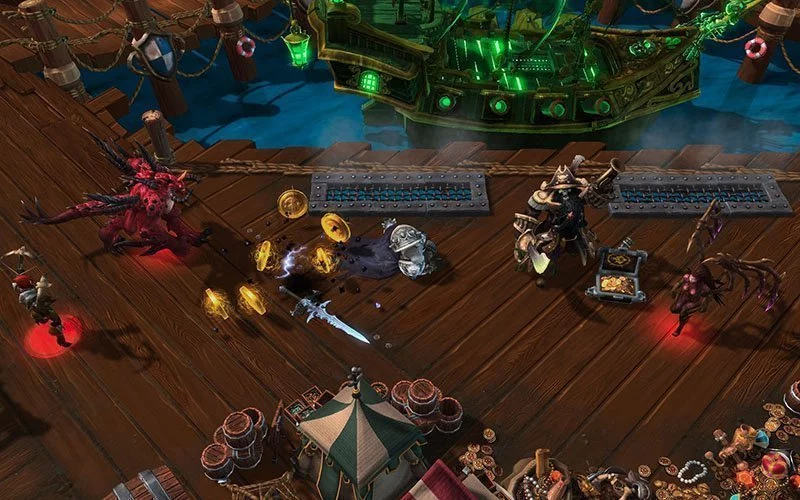Blizzard has now released its next big new game which takes characters from their vast universes and smashes them all together in a massive team-based rumble. It doesn’t stop there though, because they will be constantly updating the game with new features, game balances, and content like new battlegrounds and heroes.
The best part about it is that it’s a load of fun and you can play it for free. We were invited back once again to chat with some of the creative developers at Blizzard, this time talking to Executive Producer Chris Sigaty and Technical Director Alan Dabiri.
Luke Lawrie, Stevivor: The last time I spoke to you guys at Blizzard was back in January and you were just going into closed beta. From the transition to that and into full release what was it that made you confident that Heroes of the Storm was ready to be put out there?
Chris Sigaty: One of the primary drivers was battlegrounds; getting to our seven we felt like it was a great mixture of the variety we wanted to see. Our heroes too, we wanted to have a good representation across all of it. We actually slowed down on the release of Heroes in the last two major releases a bit. We wanted to really to get ready for it and focus a lot more on the polish, the stability of the entire online system and performance of the game, all of those things. So there was a lot more focus in that direction and wanting to pull it all together. But those last two battlegrounds were critical for us to step back and say, “This is the ground floor of where we want to be when we ship Heroes of the Storm to the world.”
Alan Dabiri: There were also some basic features that we just needed to make sure were in the game like progression systems, your profile, our ranking system and all these other modes. That’s kind of when you talk about when you feel you’re ready; this is the point where we are like, “Okay this is the platform, the base of this game.” But also the other key thing to say is that now that we are launching it doesn’t mean that we are done.
Chris: Yeah, not at all.
Alan: This is just the beginning. And now we keep on going, we keep on adding new stuff, new features and new content.
Stevivor: Chris you’re also working on [StarCraft 2] Legacy of the Void.
Chris: Yeah, as executive producer. I’m looking in on both games and really the most important part of my role is to make sure that the Legacy of the Void team has everything they need to be successful and the Heroes team has everything they have to be successful. So there’s constant conversation with both teams, and we are really trying to give both teams what they need. It’s a tough place to be in right now because they derive from the same place ultimately. That’s been an interesting challenge, but exciting because it’s all building right now and it’s a lot of the same people with overlap.
Stevivor: And so with one game it’s a $60 or $100 price model and the other is a free to play game. How have you found working with the different price models and how that fits into what style of game you’re going to be developing? Have you found much of a difference between them?
Chris: Oh yeah, it’s a massive difference. The biggest one is on delivery. Our entire team was based around releasing content every 12 to 24 months, which is StarCraft 2 right… Well, closer to 24 months generally. But we do a patch here or there, and we certainly try to make sure the balance is great, but it’s not the same as releasing constant content. Transitioning the teams mindset the way we thought about things before to this new concept for Heroes it was a huge undertaking, and it was a lot of us really scratching our heads and asking each other on the team how should things change, like our process was not based on this at all. So there was a lot of metamorphosis of a tonne of people and a lot of process. We have gotten to a reasonably good place, but we have so much more to go, we want Heroes to be constant with its content and that’s something that doesn’t impact the StarCraft team as much. But we do expect a lot of the learning and things that came from that to come across over to StarCraft 2 as well.
Stevivor: Okay, so the decisions you’re making here are influencing the other games you’re working on as well?
Chris: Sure, and even technology too. It’s not even just process and how we are going to do it, but there are tons of tools that have been developed, and lots of technology. An example of it, which goes both directions, is lots of behind the scenes build tools and things that have been done that are coming over and helping how builds come out for StarCraft 2. We try to compartmentalise those builds and not let people in during various periods so we are not stepping on each other’s toes. But also from a feature perspective, on the online side we are working on for Legacy of the Void doing an entire automated tournament system. The long-term goal of this tournament system will be, what can we take from that and change for Heroes so that we gain the benefit of it. And generally it’s not just a plug and play thing; there are a lot of design teams and all of that. But there are benefits to being so close at the same time.
Stevivor: Alan, do you have any other thoughts on your experience working on Heroes of the Storm?
Alan: He basically covered it all at the end there for me which is that we are benefiting from a shared heritage between the two games. So there a things that we can benefit from on both sides. Anything like performance improvements, any features we develop; it can all be shared across. Also, purely from a features standpoint, things that already exist in StarCraft 2 that maybe we don’t have in Heroes yet, you’re going to see those things come online. We have replays in Heroes, but we don’t yet support the multiplayer replays – like watching with your friends. But that’s a feature we have in StarCraft which will be coming to Heroes as well. Naturally there are things we can benefit from on both sides.
Stevivor: During our last interview we talked about the ranking system which had just been implemented into the game. That’s being changed a little bit now; you started off before at rank 50 and would work your way up, but now there is this new placement phase that will determine your MMR (matchmaking ranking). What was the decision behind this change?
Alan: Its funny because we’ve gone through multiple different ranking systems through all of our games. Between StarCraft, World of WarCraft and then Hearthstone, we really liked aspects of all of them. But then there are certain things with all of them that we didn’t like, and initially for Heroes we really thought that the Hearthstone system would work great for us. Ultimately there are a lot of aspects that still do, but there are somethings within Heroes; the fact that it is a team based game, the fact that you are getting matched up with other players, the fact that we are still matching with your MMR vs just purely a ranking – it changed a lot of what we wanted from that system. So the problems that we found with the system that are in the game right now are that we have this ranking system and a rank is supposed to reflect your skill. When you see that rank; say rank 23 – it’s supposed to indicate that if I was to talk to all the rank 23 people we are basically about the same skill. The problem is that when we initially implemented this we did it very Hearthstone like where we also added a progression mechanic. You started at 50 and you moved your way up. It turned out that until played enough games for your rank and your skill to converge, your rank is not truly reflecting your skill. We liked the progression mechanic we thought that was cool because there is this aspect of every season where you work your way up and would see the progress. The downside is that we don’t want that to come at the expense of an accurate ranking. That’s what we need over everything else, we need that ranking to be accurate so that you can easily communicate it. So when we have matching there is not this, “Why am I getting matched up with this ranked 30 person when I’m ranked 10?” It might turn out that the rank 30 person just hasn’t played as many games as you have, but they have won all of the games that they have played. They might be on this crazy win streak.
Where this placement match system came from is we really want to make sure your ranking is as accurate as can be. And we already have this with StarCraft, where we have placement matches where you play a few games and then we will put you into your league. With Heroes, because it’s a team based game, there are a lot more factors involved, so there are probably going to be a few more games that you are going to need to play. But once you have played those games we’re going to have this whole ceremony where you are placed into a rank and that rank will basically try to reflect your skill. So we hope that then once you start matchmaking and you see these people who are at your rank that you can now have confidence that this rank is now meaningful; that it now has relevance to how good these people are.
Stevivor: You mentioned seasons, would that rank be resetting every season and does it have any effect on where you were before? Or is it just a fresh start every single time?
Alan: No there is an effect. Number one is that we do still maintain your skill rating. That carries from season to season and doesn’t get wiped out. From the very beginning of a new season to the very end of a new season we want you to have an evenly matched game. We don’t want this situation where at the start of a new season if everyone got reset and we are matching based on your ranking that it doesn’t end up being like the Wild West – we want it to be an accurate matchup. Your skill rating still maintains, your rank however (which is your visual placement of your skill) will be reset and you’ll play a few placement matches again on the next season, but it will be far fewer because the system now knows a tonne of more information about you. Then after those few placement matches you’ll be placed into your rank again. So the progress that you had made previously [you’ll maintain], unless you end playing badly and losing all your placement matches. There is an aspect where your previous performance and your performance during the placement matches will decided where you are in the new season.
Stevivor: I just wanted to quickly touch on community engagement and where you see Blizzard fitting in that area. The two biggest competitors you’re looking at are Riot with League of Legends and Valve with Dota 2. They both have two different approaches to the way they do their thing. Riot is very hands on with the community and involved – to the point where they have things like player managers for the professional teams. Whereas Valve has this hands off approach and a lot is run by the community. Where do you see yourselves with how involved you’ll be with things that the community would like to see within the game?
Chris: I guess somewhere in the middle. Where are not looking to either of the models necessarily. We’ve been working really hard on the Heroes team to be much more in contact with our community. We feel like Heroes very much evolved through constant communication from our community through beta, through Blizzcon, and through really listening. We’ve always listened, but I don’t know if we’ve spoken back as much as we have been with Heroes. We are making a concerted effort to really be shaking hands with the players and the community these days. I expect that to continue, but I can’t really say how it directly applies to the other approaches. I feel like it’s an even more in contact place for Blizzard than we have been in the past.
Alan: We have this set of community managers as well who are not only interacting with the community on our own forums, but also on other external websites like Reddit, and other places where our players hang out in. We will respond to posts there, and in fact this whole thing I just talked to you about regarding the ranking changes that you read on our blog post, that’s another way that the community team works with us and tries to get all that information out. That’s like a dialogue, the community has given us a lot of feedback, we’ve had internal feedback and we are like, “Yeah, you know what, there are things we want to improve here.”
Chris: Internally what that has meant for us is community sits with development. Our community is part of development. We really feel like with Heroes – and StarCraft for that matter, that being much more connected is critical to it. It’s been a shift, it used to sit in different buildings but now we all sit together.
Stevivor: As well as getting feedback from the community, are you looking at the other competition out there and seeing what they are doing?
Chris: Currently as it’s as people bring up those things, we are not studying them daily. When things hit the news we are certainly – you know it perks up our ears I guess to listen to what’s happening. There are great things happening in both of those other games.
Stevivor: Going back a little while now there was a trade mark dispute which was settled between Valve and Blizzard. Valve ended up going in and changing a few of the characters in Dota 2. When you are designing heroes to put in to your game are you trying to distance yourself from what they have done, because DotA originated from WarCraft 3 a lot of the characters are from that universe. Just looking at the type of heroes being put into the game it seems like you’re doing your own thing and not worrying about it.
Chris: Yeah we aren’t. We are very much looking to all the games, the design stuff really makes a concerted effort to say, “Okay we are ready to bring the Butcher in” for example. It’s what is that’s sort of core to that, and it’s not what is this game doing which has a character that’s similar. It’s, “What does this character do in our game, and how can we capture the essence of that?”. It’s a challenge because those games are played differently than Heroes, and how are you going to make Valla or Johanna feel mighty and powerful even though in Diablo 3 they are literally wiping out hordes of monsters all the time. Now you’ve got them coming into Heroes and being much more pinpoint, how can you still feel like Valla, how can you still feel like Johanna. But I would say we don’t really look at all, it’s largely about how those heroes would play in our games that is the influence.
Alan: – And we really go back to the original source of it, and I don’t think we need to look to the other games for it, we can look at where it came from and be true to the origination point.
Stevivor: I guess I was thinking more or less of distancing yourself from people looking at Heroes of the Storm and saying “Oh well it was done over here first”.
Chris: Ah yeah, “they just stole it”.
Alan: I don’t think anyone is doing that to be honest. We are just trying to do our own thing and figure out what’s fun and what’s not. Who knows some of them might be similar to what other people are doing and some of them might be completely new, wacky and different. I don’t think we are really making too much of an effort to say, “Oh no we can’t do that because they did something similar.”
Stevivor: Going forward Heroes of the Storm is now out. I feel like it would be hard for you guys to make changes to the meta game for Heroes, but what you’re doing with the battlegrounds like introducing different themes seems like a great way of changing things up. Is that the plan going forward in terms of keeping things fresh and interesting?
Chris: I think you’ll see some exciting things. Right now you just saw a sneak peak at its battlegrounds and heroes, but we’ve got some more ambitious things ahead. One of the things we’ve tried to do from a tone perspective with Heroes is really keep the unexpected tone to it. I feel like the battlegrounds that we’ve landed with set that tone, but it’s just a baseline, it’s just the beginning of where could we go with this, the sky is the limit. Really the sum total of Heroes of the Storm is the nexus, it’s very open ended. Sanctuary is arriving, what about pirates and what not. We have this blank canvas that we can do a lot with, and the variation of heroes and worlds, including future worlds like Overwatch and expansions for existing games. I feel like we have just tonnes of opportunity to continue that expect the unexpected story, and really even push the limits of that much further than we have so far. I think we set the tone, now we get this opportunity to show even more craziness and have fun.
Stevivor: So it sounds like you don’t have like this focus of, “Alright the games out the next six months we’re just going to put new heroes out.” It’s going to be features, heroes, battlegrounds, just lets go with everything.
Chris: To be fair content takes a long time, we are going to be releasing content and you’ll see that. But at moments when we have the opportunity to showcase sort of what’s next are opportunities like BlizzCon. We’ll be showing some more of those there.
Stevivor: Within this genre of game, it has a very negative effect on some people sometimes in terms of the toxicity amongst players. You’ve eliminated global chat; not being able to chat to the other team – but most of that toxicity generally comes from within your own team. You’ve got things in there already but are there plans to take that further, or even rewarding players for being good?
Alan: Absolutely. All of those things. To start with I think the key thing that we do to try and differentiate ourselves is in that area is the game design itself, really focus on a lot of points that could be toxic. That could be things that people would fight over or things that people would be negative to each other about. The reality is even with those improvements there are still going to be people on the internet that are just… you know, they are negative. There are things we already have in the game like reporting, block, all of that. Beyond that, which by the way just speaking about that aspect before we go to the positive stuff – just that in itself is a departure from what some people have seen in other games. Because reporting players in our game; we actually have a very large customer service staff that is active and engaged with this, and they will take action – infact we are already doing this today. If somebody does something or is saying something abusive that is somehow affecting your playing negatively, we will get those reports and when we get enough and we investigate we’re going to take action on that player. There are already people who are being removed from the gameplay because they are not people we want in the game. That’s a key thing that I wanted to call out.
We have various systems we are talking about. One other thing also is in addition to the straight up muting of somebody, we just added a thing where if there is a night where you are just not feeling it, and you kind of don’t want to hear everything else from a chat perspective that the rest of your team has to say you can do this mute all now – where it’s just muting your whole team. What you fall back on is the ping system, and we think we have a fairly robust ping system. This is something we want to keep working on where you can contextually give these pings like, “I want to attack this, or going over here, that is retreat.” Really 99% of your communication can be done through that where you don’t need to type out, and in fact typing out is inconvenient even in the middle of the heat of battle.
Beyond those things there is stuff that we are working on, but we don’t have any specifics right now. When you are talking about a rewards system, it is something we have discussed where we can introduce some way that will allow the players to police themselves. So when you come out of a game you can basically rate the other people that you play with, “You know this other player was really cool, he told me some tips. Even though I screwed up he was all cool and said don’t worry about it. Ultimately we came back and we won, and so I give him my kudos, I give him my thumbs up.” If enough people are kind of saying this guy is good maybe we give him some kind of bonuses, we give him some kind of honourable bonus whether its XP, gold, or whatever that might be. So whatever motivatates or encourages people to be positive in the game, not because it’s just the right thing to do but because they will be rewarded for it as well. Then on the flip side if you come out of a game and “this person was very negative and they were harassing me and I give them the thumbs down,” we can then take action there too. There’s like a wide gambit of action we can take, one of them is we might just go, “Okay you know what this guy is a little more aggressive, he has a different tone to what we are used to, we’re going to take him and put him with other people who are also like that”. It’s like; okay you can play, and that’s your style of play but a lot of people don’t like the way you’re playing. They don’t like it when you start yelling at people. But you know what, other people who do like that, we’re going to have you go play with them. We’re going to have you get together with those guys. We are actually already doing this right now with the leaver system, where if you leave a game we will let you keep on playing but right now you’re going to be matched up with other people who like to leave the game. And as a result if that’s what you like to do, you don’t like to stick with it and battle through that game, well maybe there’s other people who will want to do that as well.
Then finally if someone just gets enough negativity marks then we really don’t want you in the game, honestly as much as we want everyone to come play our game, there’s a certain point where if you’re not willing to play by what’s excepted, the fair play, the good environment that everyone else wants to play in, then its better off that you are not part of the game.
Stevivor: Are you seeing an effect in player behaviour after responding to the reports or is it too early to tell right now?
Alan: Yeah I think it’s too early. Some of the things I said are in the game, and some of the things I mentioned are not in the game yet. So some of those we haven’t taken action on yet, but you can notice the impact purely just in the reporting mechanism and the customer service side of it. Where if somebody goes and posts on the forum, “Hey, I just got banned!” and immediately they say that they don’t think it was fair, and other people will ask, “Well what did you do?”, then suddenly their story starts changing and it all comes out – everyone then says, “Well yeah you should have got removed.” As a result you’ll see them say, “You know what I was over the line, and I’m going to change my ways.” I think that will help some people, and then this whole social aspect – this toxicity thing, I don’t think there is like a, “We implemented X, now we are done.” This is an ongoing thing, and it’s something that we are going to keep on monitoring, implementing, fixing, moderating, etc – we got to just keep going with this and really look at what’s best with the game, working with the community, what’s best for the community and seeing what they want.
Chris: One thing I was going to point out is that it’s too hidden right now – your ability to report somebody. We’ve really stepped up customer service at the launch to say, “Hey as these come in you don’t need to wait, jump on it right away, be active on it.” You can report after a game and search for it, and see it on the score screen.
Alan: You can actually report during the game as well.
Chris: Yeah but you have to right click and its hidden to find the bit for reporting people. We’re definitely being hyper vigilant about it, especially during the launch. Then as Alan said there are a lot more features to come but the biggest thing right now is absolutely how we are monitoring and what we are doing as a reaction to what we see when it’s negative behaviour.
Stevivor: You’re putting in a lot work into battlegrounds and the variety of games on offer. Where are you at with people modding the game themselves and creating their own custom types of games?
Chris: We have that power of the editor in StarCraft 2, and that is the origination of Heroes of the Storm, it was literally just a mod that we were making to demonstrate the power of the editor. So absolutely, we want to have modded versions, but it’s complicated though and we are a ways off from that. There’s many features, a giant list of things that we want – and it’s one of those things. I’d expect that it’s not sometime soon, maybe next year, something like that, but we are looking. This game has a long road ahead of us, we are committed for the long haul, definitely expect that to happen in it’s lifecycle.
Stevivor: Just to wrap things up Twitch has really become a big thing over the last few years, you can have your everyday person that can jump on it and show off a game. What are thoughts on how that has evolved and how it’s shaping the future of games?
Chris: I love it.
Alan: Yeah man its awesome. We watch games on Twitch all the time, we watch a lot of Heroes of the Storm , and we watch StarCraft 2.
Chris: Its really helped Esports, it’s something that is really near and dear to my heart – and to Blizzard’s in general. It’s one of the most exciting things in games to see the highest level players compete, and streaming has really made it grow much more than it would have without that technology. It’s a very exciting time and without that technology I don’t think we would be where we are today, and I mean the gaming industry in general, just how popular it is and how big a deal competitive Esports has become. But also in creating personalities and really tweaking what it means to have community members and community leaders. A lot of them are entertainers at this point who have established themselves from being fun to watch on streams. It’s so cool.
Thanks to Blizzard for allowing a very generous amount of time to talk with their developers. Heroes of The Storm is available now to play for free. Look out for our review soon.
This article may contain affiliate links, meaning we could earn a small commission if you click-through and make a purchase. Stevivor is an independent outlet and our journalism is in no way influenced by any advertiser or commercial initiative.


